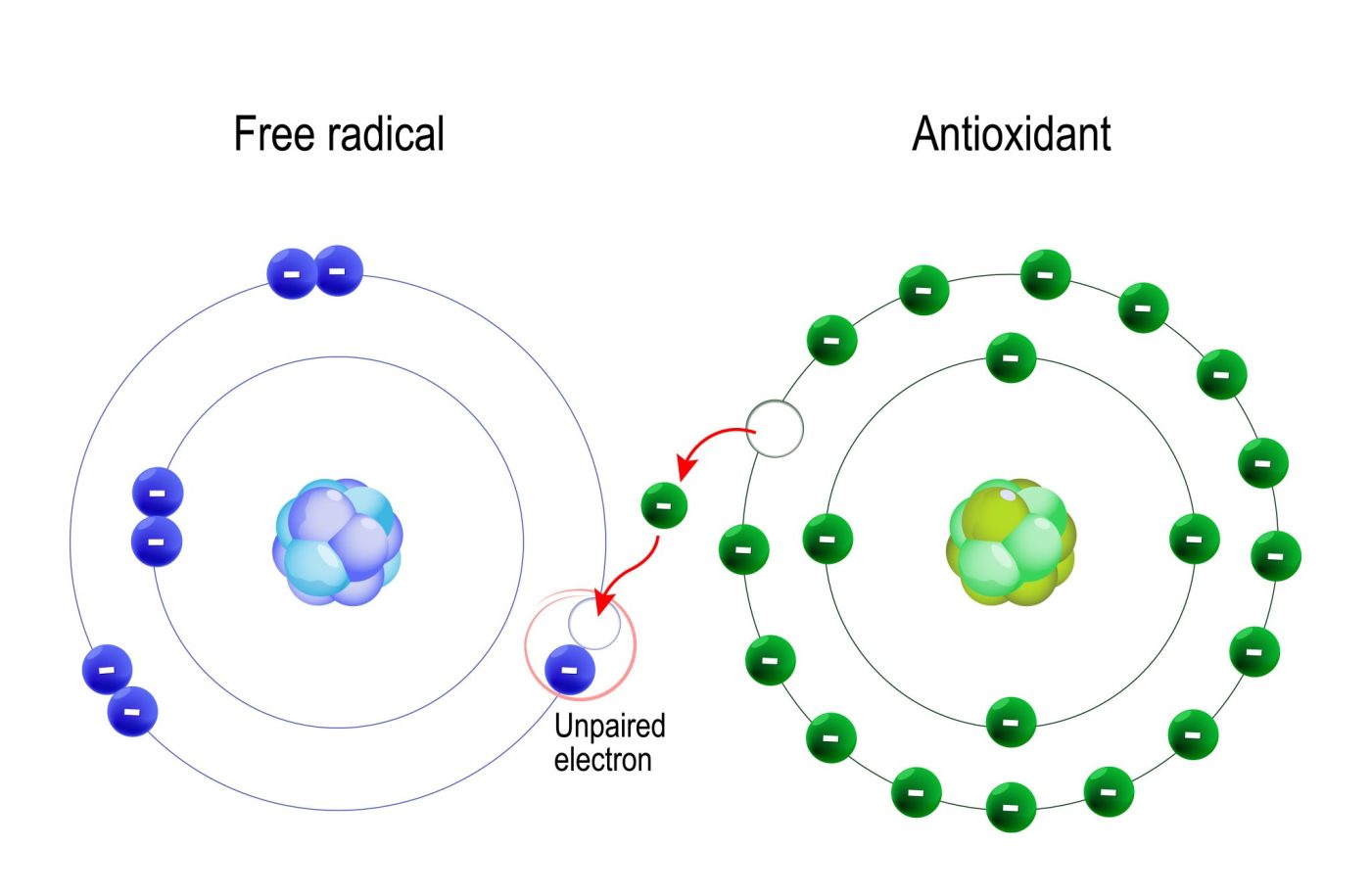
When a car rusts, an apple rots, or skin wrinkles, it is always due to “free radicals”. Free radicals are unstable oxygen molecules that attack the body’s 100 trillion cells every day, triggering a destructive chain reaction that can manifest itself in a wide variety of diseases. However, we can protect ourselves from this with certain radical scavengers called “antioxidants”. One such radical scavenger, Astaxanthin, a highly potent carotenoid, is one of the strongest antioxidants. This substance can protect the body´s cells from the attacks of free radicals.
Natural astaxanthin is the strongest antioxidant
You cannot see them, cannot hear them, cannot smell them, and cannot feel them. But they are there! The Killer in the Air. Their name: “Free radicals”. This is simply oxygen molecules.
Oxygen is vital to us humans. But how can a vital element be capable of such destruction? On one hand, oxygen sustains, promotes, and fuels life – on the other hand, it causes stress and damage to our proteins and even DNA, impairing our health and well-being in multiple ways. The reason: Not all oxygen molecules are made equal.
Negative influence of oxygen molecules
The majority of respirated oxygen is stable and indispensable for life. But there are also unstable oxygen molecules, including the free radicals. Radical and non-radical oxygen molecules differ in their molecular structure. Radical oxygen species have an unpaired – unstable – electron, and this excess of energy can only be stabilized by stealing electrons from other nearby molecules, such as our proteins or DNA. This is how free radicals can quickly develop into killer substances. The radical oxygen molecules can influence our organism very negatively.
The apple and the lemon juice
So free radicals react chemically with important parts of our body and oxidize them— cause them to “rust”, so to speak. Visible signs of this oxidative stress include, for example, age-related pigmentation marks (age spots), wrinkles, and grey hair.
There are certain natural substances, however, which calm the overenergetic free radicals. These substances are called “antioxidants”. You can easily test the power of antioxidants yourself: Cut an apple in two, coat the cut surface of one half with lemon juice, and wait. You will see that the untreated half will quickly become brown. The reason for this is the attack by oxygen—the attack of free radicals. You are witnessing the effects of oxidative stress on an apple. The half coated with lemon juice will not become brown so quickly, because it is protected by the power of the antioxidants; lemon juice contains vitamin C, another powerful antioxidant.
Astaxanthin – the super radical catcher
The antioxidants, or “radical catchers”, have the unique ability to stabilize the radical oxygen molecule by donating electrons, without becoming unstable themselves. This neutralizes the radical without damaging neighbouring molecules or cells, and stops the destructive chain reaction, as the antioxidant remains undisturbed from its electron loss. Thus, antioxidants help to ensure a balance within our bodies.
The antioxidants’ “special forces” is Astaxanthin. This carotenoid from the green algae Haematococcus pluvialis is renowned worldwide as the strongest natural antioxidant at all. As radical catcher, it is 6000 times stronger than vitamin C, 800 times stronger than coenzyme Q10, and 550 times stronger as vitamin E. In addition to this superpower, Astaxanthin has a decisive advantage over other antioxidants: it is active in both the hydrosoluble and liposoluble milieu and can therefore protect the whole cell from external influences. Its molecular structure is perfectly suited to strengthen the cell surface and protect it from oxidative damage.
Beneficial for skin protection
In dermatologic research, Astaxanthin is considered a great success. Scientific studies have shown that pure, naturally extracted Astaxanthin can, among other effects, slow down the oxidative aging of the skin by free radicals, promote regenerative processes of the collagen tissue, and protect from UV radiation, irritations, and sunburn.
This mighty antioxidant not only protects the skin— Astaxanthin as a hydrosoluble and liposoluble antioxidant protects all 100 trillion cells in our body.
The benefits of astaxanthin for humans will be explored in future blogs – keep up to date by following us at www.algalif.com.
Learn more by going to the Algalif Knowledge Center.
An Algalif Blog by Silja Dögg Gunnarsdóttir, Key Account Manager – Europe.
silja@algalif.com


